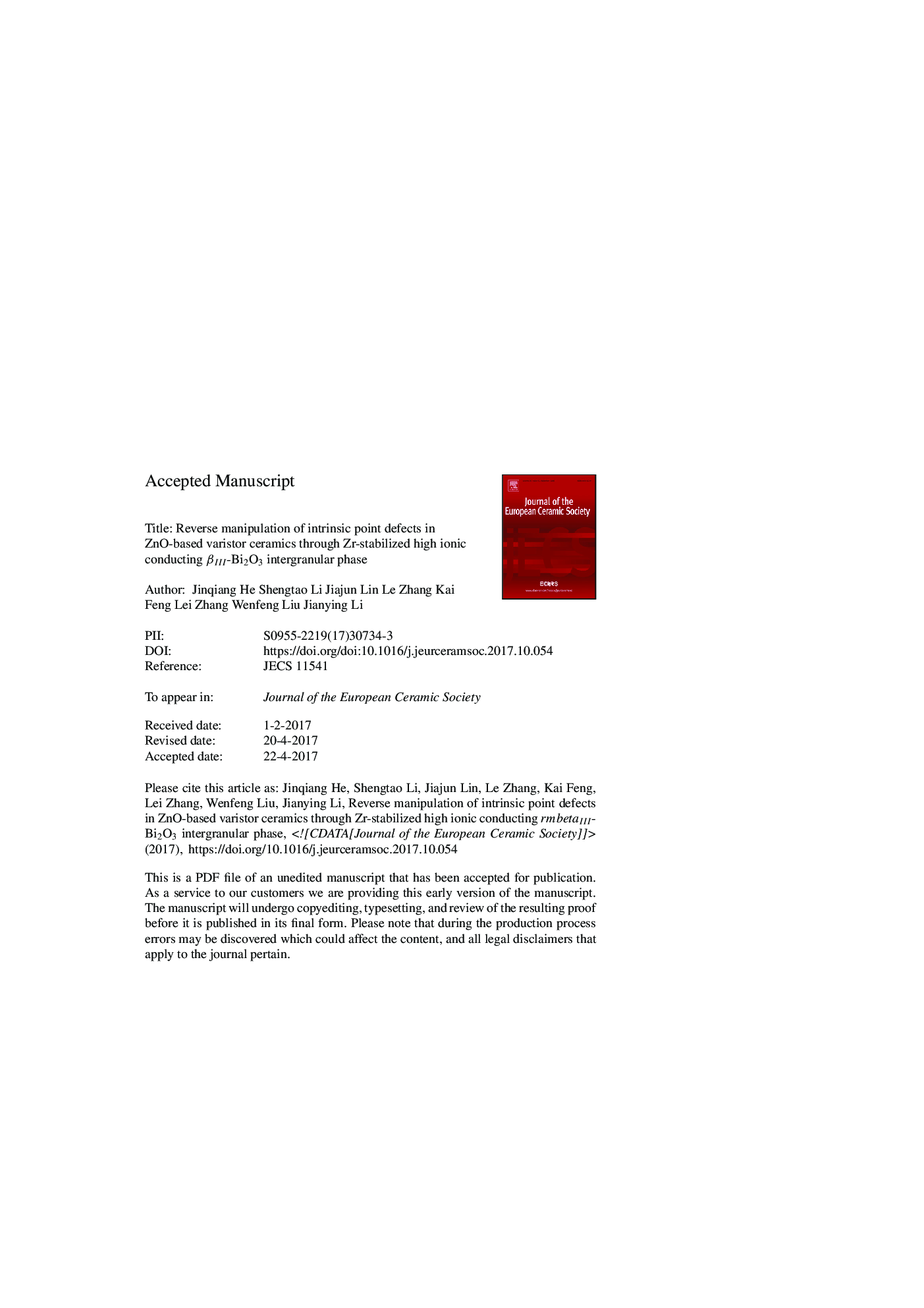| Article ID | Journal | Published Year | Pages | File Type |
|---|---|---|---|---|
| 7898779 | Journal of the European Ceramic Society | 2018 | 29 Pages |
Abstract
Intrinsic point defect structure plays a crucial role in functional ceramics with a grain-grain boundary microstructure. In the present study, a novel method of reversely manipulating intrinsic point defects (oxygen vacancy, Vo and zinc interstitial, Zni) in ZnO-based varistor ceramics is proposed, which makes use of Zr-stabilized high ionic conducting βIII-Bi2O3 intergranular phase. It is found that Zr-doping not only modifies the grain growth by the formation of secondary Zr-rich phase, but also influences the intrinsic point defect structure via the stabilized βIII-Bi2O3 phase, resulting in reduced Vo density but increased Zni density. The reverse manipulation is unambiguously demonstrated by broadband dielectric spectroscopy and further confirmed by the accelerated ageing experiment. The proposed intrinsic point defect dynamics unveil an important but usually neglected function of the dopant that has little solid solubility in ZnO grains, which opens up a promising way to tailor the material property.
Keywords
Related Topics
Physical Sciences and Engineering
Materials Science
Ceramics and Composites
Authors
Jinqiang He, Shengtao Li, Jiajun Lin, Le Zhang, Kai Feng, Lei Zhang, Wenfeng Liu, Jianying Li,
